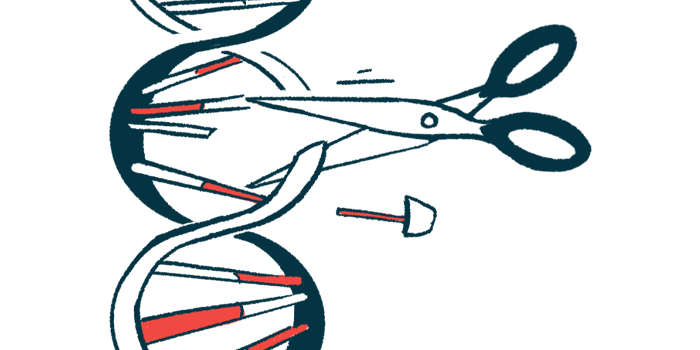CRISPR-Cas9 gene editing corrects common LGMD type 2A mutation
System works by using enzymes programmed to cut DNA at a specific genetic sequence

A new gene editing technique was able to fix the mutation that most commonly causes type 2A limb-girdle muscular dystrophy (LGMD), a new study reports.
“We show an effective and precise repair to correct the most frequent [LGMD type 2A] mutation … Our approach is a promising source for autologous [self-derived] cell replacement therapies for LGMD” type 2A, the researchers wrote in the study, “Cas9-induced single cut enables highly efficient and template-free repair of a muscular dystrophy causing founder mutation,” which was published in Molecular Therapy Nucleic Acids.
LGMD encompasses more than two dozen genetic disorders that feature muscle weakness that mainly affects the shoulders and hips. The most common form of LGMD is type 2A (also called type R1), which affects about 80,000 people worldwide.
LGMD type 2A is caused by mutations in the gene CAPN3. Hundreds of disease-causing mutations in CAPN3 have been documented. The most common, a deletion variant called c.550delA, originates from the eastern Mediterranean.
Scientists in Germany created a system using CRISPR-Cas9 technology to “correct” the c.550delA mutation. CRISPR-Cas9, adapted from molecular mechanisms that bacteria use to defend themselves against infecting viruses, works by using enzymes that can be programmed to cut DNA at a specific genetic sequence.
DNA molecules form as two strands, which gives them the famous double helix shape. The system works by cutting the two strands unevenly so one strand sticks out a bit further than the other. When the cell’s normal DNA repair machinery comes in to fix the cut, it “fills in” an extra nucleotide — one of the building blocks of DNA — so both strands are the same length. Essentially, the DNA repair mechanism is tricked into inserting an additional nucleotide where one had been deleted, repairing the mutation.
Correcting common LGMD gene mutations
After testing to optimize the gene editing system and test it in research models, the researchers examined whether it could correct the mutation in muscle satellite cells with LGMD type 2A. Satellite cells are a special subset of muscle stem cells being explored as a potential avenue for cell therapy. The idea is to collect these cells, edit them to correct the mutation, then transplant them back into the patient to grow into healthy muscles.
“Satellite cells are remarkable as they are quiescent [inactive] but remain able to regenerate skeletal muscle even in old age,” the researchers wrote.
The system was tested on satellite cells from three LGMD type 2A patients. In two of them, both CAPN3 copies carried the c.550delA mutation. After editing, a substantial number of genes were corrected — 55% in one patient and 33% in the other.
The third patient harbored the 550delA mutation in only one CAPN3 gene. In this patient’s satellite cells, the number of correct sequences rose from 50% to 79% after the CRISPR-Cas9 system editing.
Further profiling of the cells indicated that gene editing led to the increased function of the CAPN3 protein that’s encoded by the gene and indicated the editing didn’t induce any “off-target” changes in other unintended genes.
The researchers also injected patient-derived satellite cells into the muscle tissue of mice in a model of LGMD type 2A. Results showed the cells that had been corrected via gene editing were better able to grow and form new muscle tissue.
“Edited and healthy control cells successfully integrate into the muscle, build new muscle fibers, and repopulate the stem cell niche,” wrote the researchers, who noted that a limitation of this approach is that technical constraints mean there are usually not many cells available for any given patient. This may limit how effective cell-based therapies using this technique could be, especially when targeting large muscles in the hips. The researchers said more research is needed to improve its technical capacities and to explore cell-based strategies for treating muscular dystrophy.







